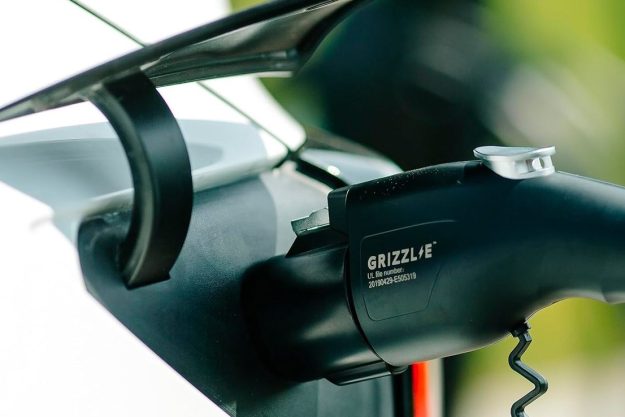The Audi SQ5 is the perfect for the man who wants to feel like he’s got a no-compromise German sports crossover but who in reality will never push the car to its limits.
When I asked Audi North America General Manager of Product Planning, Barry Hoch, whom this sport crossover was for, he calmly said, “It’s for me.”
I paused a moment and expected him to crack a smile, but he didn’t. “It’s for me. I have an S4 but my family has outgrown it. This car is for me,” he said unperturbed.
I know he didn’t mean that Audi imported this car for specifically for him (I hope). But rather, the performance-obsessed German brand brought the SQ5 Stateside for a small group of men who still crave the driving dynamics of a sports sedan but who also require the cargo and towing capacity of a luxury crossover.
And in that sense, Audi has succeeded – but just.
Turning the Q5 into the SQ5 involves more hardware changes than visual revamps. Designers tweaked the front fascia slightly, added the requisite badging, and bolted up chrome-tipped exhaust tailpipes. Aside from that, however, you might not know you’re looking at a $60,000 sports CUV.

It’s underneath the bodywork where the real changes lie. The supercharged 3.0-liter V6 engine is bespoke to the SQ5. It has an upgraded crankshaft and new exhaust system that features valves near the tailpipes that let out a loud burble when shifting gears.
The cooling capacity of the tuned 3.0 has been embiggened as well. The radiator is more voluminous than the standard Q5. Heck, it’s even larger than that of the S4.
The new exhaust sounds very good, too. It’s not throaty like many Audi S variants but rather a bit more baritone. It’s not high and it’s not deep. It’s in that middle range. Although it sounds rather sporting, I imagine it more at home in a small-bodied TT than a bulbous family hauler.
Engineers have also tweaked the eight-speed standard automatic transmission, giving it the shifting characteristics of the seven-speed dual-clutch S tronic gearbox bolted to the RS 5. Pop the shifter down into Sport and hammer the skinny pedal. It’ll throw you back into your seat and kick you through every single one of the eight speeds. It gives a slight pause at each shift, an exhaust grumble, and a sharp kick as it grabs the next gear.
I reckon it’s those transmission shift characteristics that will sell the SQ5 on dealer test drives. By the time the driver gets to it up to third, he’ll want to circle back and sign the papers. It’s that enrapturing.
When not in the switchbacks, the SQ5 is at home on light curves and rolling hills at speeds well in excess of the Federal speed limit.
The outcome of all these powertrain revisions is a total power output of 354 horsepower and 346 pound-feet of torque – an 82-horsepower increase over the Q5 3.0T model.
All those ponies and torques are sent to all four wheels through Audi’s quattro all-wheel drive. Put it to the pavement and the SQ5 will do a 0-60 mph time of 5.1 seconds, which isn’t bad, considering the SQ5 weighs around 4,500 pounds.
While the grunt and the go are both rather winsome, there is a place where the SQ5 begins to lose me, though.
Hammering it through the mountainous switchback roads outside Durango, Colorado, I found myself underwhelmed with the handling.
Come into a corner hot and the suspension wallows a bit, unsure of what it’s supposed to do before it finally weights up and reacts. In that time – for a split second – you hear the light whine of tires as you drift sideways, and wonder if you’re going to go off.
Suddenly, though, the SQ5 reacts. It remembers that it’s not actually an eagle, free on the wind but rather a tall, heavy crossover and it needs to make this corner in order to live to see another filling station.
When not in the switchbacks, the SQ5 is at home on light curves and rolling hills at speeds well in excess of the Federal speed limit. Once the suspension hooks up, the SQ5 is a handling masterpiece.
That night, I found out why the SQ5 dances through the corners. Sitting around the dinner table, again with Barry Hoch, I learned that the SQ5 was designed for Germany, for German sensibilities. Its suspension was originally designed to be 30 mm lower than it is on the American version.
Why the ride-height hike? In order to meet light-duty truck status here in the States, the SQ5 had to retain the ground clearance of the standard Q5. And why must a car-based sports crossover be Federally designated as a truck? So that Audi North America can avoid emissions penalties for its entire U.S. lineup.
You’d hope, then, that the Germans went back to the drawing board and re-worked the chassis for the lofty American ride height on the SQ5. The answer is a resounding: nein.
No, everything about the euro-spec SQ5 suspension remained unchanged: shocks, dampers, etc. Except, Audi bolted up the standard Q5 springs in place of the lowered European units and sent it to showrooms.
The result is a very quick, very good-looking crossover (light-duty truck if the EPA is reading this) that handles brilliantly. That is, once that extra spring slack is squeezed out.
Getting there, though, is a bit scary.
Highs
- Excellent acceleration
- Terrific baritone exhaust note
- Well-controlled automatic transmission shifts
- Tasteful yet sporty exterior improvements
Lows
- Easily overwhelmed by sharp cornering
- Insufficient seat side bolstering
Editors' Recommendations
- Hyundai Ioniq 5 first drive review: Retro modern
- Audi’s updated Q5 receives extra power, better infotainment, and OLED lights






